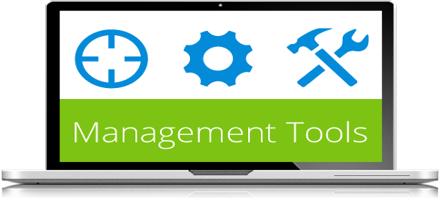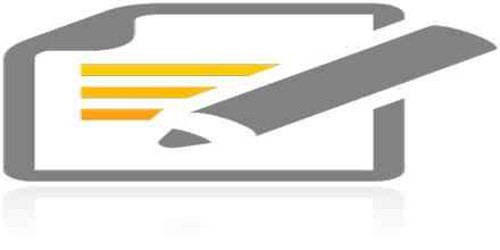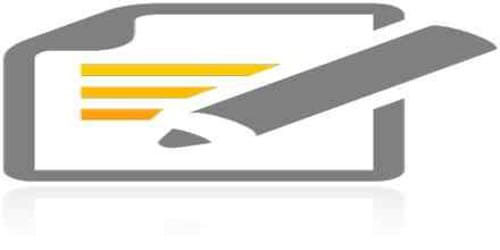Sanofi Bangladesh Ltd Management Tools
SAP to Workday
The main concern of the study will be about finding out the areas of Sanofi management tools in which a process software upgrade is needed in order to ensure overall organizational transparency and a best practice of managing eligible employee panel. This would definitely be compliant with the structural process of Sanofi worldwide. Proper findings of this study should be to find out the bottle necks of the management tools SAP and Workday process and proper implication of recommended strategies can result in various dynamic developments. This study will facilitate not only the company itself management tools that excited for the last decade with SAP and focus on the new management tool of Workday that will most certainly improve the business sector and the faculty of business administration in multidimensional ways. This study and its findings will be able to compare and contrast the ideology of management tools process of SAP and Workday and by matching the positive and normative models in details; it will be able to show the gaps between these two management tools. After finding out the gaps, it will be easy to develop a recommended process to follow to better structure or model and that can certainly be considered as a useful new tool for both the business sector and faculty of business administration and will also add to any individual‟s personal insight about overall management tool process with Workday.
Introduction
Sanofi Bangladesh Limited is the local affiliate of Sanofi global, which is the parent company. Sanofi is one of the world‟s leading pharmaceutical companies which are dedicated to the discovery, development, production and distribution of medicines and vaccines, for all people throughout the world. Everyone at Sanofi Bangladesh is committed to improving health and quality of life to people every day through our strong partnership with healthcare professionals, medical institutions and patients. A world-wide presence, market leadership in vaccines, major biological products and a strong and long-established presence in emerging markets: these are the core strengths of Sanofi. Company business activities also include consumer healthcare products. Sanofi is present in 110 countries on five different countries, with almost 100,000 employees (end 2008). Sanofi Bangladesh Limited is the entity that has been formed due to the amalgamation of three legal-entities- Aventis Limited, Fisons (Bangladesh) Limited and Hoechst Marion Roussel Limited. The legal integration process has taken few years after the global merger between Sanofi-Synthalebo and Aventis in 15 September 2004 and finally the existing three legal entities have amalgamated as Sanofi Bangladesh Limited on December 11, 2007.
Objectives
The purpose of the study is to analyze and evaluate the overall management tool of Sanofi and figure out ways of these tools which can be beneficial for the company like Sanofi. In my research specific objective of the study is to support the HRD of Sanofi in order to simplify the management process in an effective way and bring improvement in the necessary areas so that the company can grow big and strong in a simplified and efficient manner. This will be resulting from the proper implementation of the recommended strategies which will eliminate the constraints from the process. The findings and analysis of this study will provide some new ideas and recommendations which might help the authority to make development in terms of the era of management tool.
Research Methodology
The report is based on both primary and secondary research. In order to collect primary data, two methods will be used in this study.
Primary Data: One is the use of questionnaire and another is the observation method. In the questionnaire, the use of open ended questions will be more prone as it will be designed to understand the factual information about the use of SAP and Workday. Due to working within the organization alongside other employees, I have the opportunity to work on the sites as a curriculum of my stay.
Secondary Data: I will try to collect some company online articles along with SAP and Workday information for making my illustration more exact and accurate.
Company Overview
Sanofi Bangladesh Limited is strongly committed in improving the quality of lives of people.
Sanofi is the largest global pharmaceutical company in Bangladesh with a dedicated team of more than 1200 employees. Sanofi Bangladesh Limited is the entity that has been formed due to the amalgamation of three legal entities- Aventis Limited, Fisons (Bangladesh) Limited Hoechst Marion Roussel Limited. The legal integration process has taken few years after the global merger between Sanofi-Synthalebo and Aventis in 15 September 2004 and then the existing three legal entities have amalgamated as Sanofi-Aventis Bangladesh Limited on December 11, 2007. In May, 2011 they finally changed the name to Sanofi Bangladesh Limited.
The head office of Sanofi Bangladesh Limited is in SegunBagicha, Dhaka. The local distribution of Sanofi products are ensured by 12 sales and distribution offices nationwide. Sanofi Bangladesh Limited has a diverse portfolio of products ranging from widespread names like Fimoxyl, Butapen, Clexane, Amaryl, Profenidetc to traditional names like Flagyl, Stemetil, Oracyn-k, Frisiumetc to revolutionary original research product like Eloxatin, Taxotere and Lantus.
Locally, Sanofi encompasses Sanofi Pasteur, a world leader in vaccines. In Bangladesh, vaccines like TetavaxTM, Verorab TM, Euvax BTM, Avaxim TM, ACT-HIBTM, TyphimViTMetc are included in the portfolio.
Sanofi Bangladesh Limited is strongly committed as a socially responsible organization. Projects like “My child matters” carried out in partnership with UICC (International Union against Cancer) to fight against child cancer is one of the numerous examples of the organization‟s commitment to the society.
Corporate History
May & Baker, PPI and BPI: May & Baker and Pakistan Pharmaceutical Industry- PPI jointly established a company with share distributed as May & Baker 60% and PPI 40%. After 1971, the share percentage remained same, but instead of PPI now its share belonged to BPI , Bangladesh Pharmaceutical Industry.
Fisons: Fisons was incorporated on July 15, 1964 as a private Company in the name of Dacca Pharmaceutical (Fisons Marker) Ltd. The company was renamed as Dacca Pharmaceuticals (Fisons) Ltd in 1972 and as Fisons (Bangladesh) Ltd in 1973.
Hoechst Marion Roussel: In Bangladesh Hoechst Pharmaceuticals Company Ltd. (HPCL) was incorporated in 1958. It was renamed as Hoechst Bangladesh Ltd. (HBL) in 1992. Again HBL‟s name changed and registered into Hoechst Marion Roussel Ltd. Due to Global Restructuring policy of Hoechst Ag in 1997.
Creation of Rhone-Poulenc Rorer and Acquisition of Fisons: In 1989, due to global unification, BPI became Rhone-Poulenc Bangladesh Ltd. In 1995, as global mergers took place with Rorer Inc. of the USA, the human pharmaceutical division of Rhone-Poulenc Bangladesh Ltd. Renamed itself as Rhone-Poulenc Rorer Bangladesh Ltd.Same year in October, in a global move Rhone-Poulenc Rorer acquired Fisons Ltd. Consequently Fisons(Bangladesh) limited was acquired in 1996.
Creation of Aventis: In 1999 Hoechst Marion Roussel of Germany and Rhone-Poulenc rorer merged globally to create Aventis. In Bangladesh Rhone-Poulenc Rorer Bangladesh Ltd. Received the clearance certificate from Registrar of Joint Stock companies to became Aventis Limited.
Acquisition by Sanofi-Synthélabo of Aventis and subsequent merger into Sanofi-Aventis, the number one pharmaceutical group in Europe and the third-largest group worldwide in 2004. Sanofi-Aventis Bangladesh Limited: Acquisition by Sanofi-Synthélabo of Aventis and subsequent merger into Sanofi-Aventis, the number one pharmaceutical group in Europe and the third-largest group worldwide in 2008.
Sanofi Bangladesh Limited: After the merge Sanofi board of director took the decision to change their name from Sanofi-Aventis to Sanofi in all their operations worldwide.
Business Strategy:
Sanofi is a diversified global healthcare leader with a number of core strengths: a strong and long-established presence in Emerging Markets, a portfolio of diabetes drugs including the biggest selling insulin in the world (Lantus), a market-leading position in Vaccines and Animal Health, a broad range of Consumer Health Care products and research that is increasingly focused on biological products, allied with a track record of adapting cost structures and a solid financial position.
Like most pharmaceutical companies, we are facing competition from generics for several of our major products, in an environment subject to cost containment pressures from both third party payers and healthcare authorities and to tougher regulatory hurdles. We have decided to respond to these major challenges by developing our growth platforms. Throughout 2010, we have implemented a wide-ranging transformation program launched in2009, designed to secure sources of sustainable growth. Our strategy focuses on three key themes:
Increasing innovation in Research & development(R&D)
We conducted a complete and objective review of our research portfolio in 2009, in order to reassess the allocation of resources. This review led to a rationalization of our portfolio, targeting the most promising projects. In February 2011, 53% of our development portfolio consisted of biological products and vaccines. We also redefined our decision-making processes so that new commercial potential and the scope for value creation are better integrated into our development choices. R&D is now based on an organizational structure that focuses on patient needs and encourages entrepreneurship and autonomy. This network-based organization, open to external opportunities, will enable our R&D to be more creative and make the most of innovation, wherever it comes from.
Adapting our structures to meet the challenges of the future
During 2009, we adapted our operating model, previously too focused on the best-sling prescription drugs in our traditional markets, to reflect the diversity of our activities and our geographic reach. In particular, we tailored our strategy, structure and offering to each region‟s needs, so as to deliver the most appropriate solution to each patient. 39% of our employees are located, and where we have strengthened our Consumer health Care operations. We also realigned our industrial capacity to reflect our expectation of changes in volumes and our analysis of the opportunities for growth. Streamlining our structures and our operating model has also enabled us to further improve our operating ratios. In 2010, our cost control program allowed us to reduce the weight of our research and development expenses and our selling and general expenses compared to our net sales.
Exploring external growth opportunities
Business development is wholly integrated into our overall strategy and translates into disciplined acquisitions and alliances that create or strengthen platforms for long-term growth and create value for our shareholders. During 2010, we pursued this active and targeted policy, announcing 37 new transactions, including nine acquisitions or creations of joint ventures and 28 R&D alliances. We successfully completed our acquisition of Chattem, one of the leading manufacturers and distributors of branded consumer health products, toiletries and dietary supplements in the United States. We also strengthened our Consumer Health care platform through the acquisition of Nepentes S.A. in Poland, as well as the creation of a joint venture with Minsheng Pharmaceutical Co., Ltd. We also acquired two R&D companies: The U.S. biopharmaceutical company TargeGen Inc., which develops small molecule kinase inhibitors for the treatment of certain forms of leukemia, lymphoma and other hematological malignancies and blood disorders; and the U.S. biotechnology company VaxDesign, which develops in vitro models of the human immune system used for the development of vaccines. In Animal Health business with Merial to form a new animal health joint venture equally owned by the new Merck and Sanofi-Aventis, which when completed will create a global leader in Animal health. On February 16, 2011, Sanofi-Aventis announced an agreement to acquire Genzyme Corp, a leading U.S.-based biotechnology company specializing in the treatment of rare diseases. The agreement is described as “Item 10.Additional Information-C. Material Contracts and any acquisition remains subject to fulfillment of a number of conditions including acceptance of the transaction by holders of a majority of shares of Genzyme common stock on a diluted basis.
We expect our sound financial position should give us significant potential to create value via external growth opportunities, with the aim of securing a return on investment in excess of our cost of capital.
Departments
Currently in Bangladesh Sanofi is operating with more than 900 employees. These employees are working in various areas of our organization. Whether one‟s expertise is in Sales, Marketing, Research & development, Finance, Manufacturing, Legal, IS, Human Resources or any of their other departments, that individual can impact the lives of others.
Finance and Accounts:
The Finance and Operations department contributes greatly to the direction of our company, as well as to the development and implementation of its strategic planning, in addition to challenging the organization to maximize results. Our team counsels internal client groups on financial matters, assesses the financial impact of business decisions and provides various support services, such as Information Services, Legal and Purchasing. Finance & Accounts departments mainly focused on:
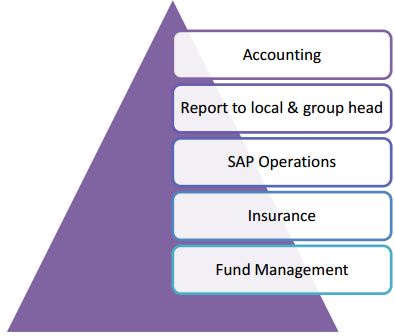
Sanofi’s Pharmaceutical Operation:
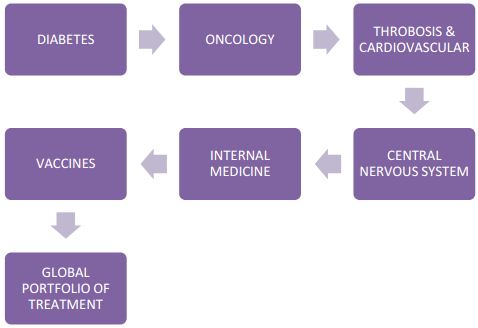
Business Support
United by a common purpose of enhancing the effectiveness of our sales and marketing functions, Business Support provides a service to the company through business planning and intelligence, learning and development training for our staff, market research, forecasting, events planning and measuring and rewarding sales staff performance support.
Sales and Marketing
Sales team is mainly focused around Sanofi‟s key customers in the areas of Hospital, General Practice (Retail) and Pharmacy, their sales and marketing teams work together to ensure that patients, physicians and healthcare providers are well-informed about the company‟s products.
They are dedicated to sustaining their corporate image and maintaining the trust of the medical profession and their patients.
Medical and Regulatory Affairs
Medical and Regulatory Affairs encompasses a variety of disciplines and job responsibilities that begin during product development and continue throughout the drug‟s life cycle. We offer opportunities in fields of Regulatory Affairs, Medical Information and Product Safety, Medical Affairs. We ensure compliance with the local (country) and group regulations of drug administration such as registration and approval of new products and renewal of old ones. They also provide support to marketing and sales team by preparing literatures, clinical studies and looking after safety issues of drugs. In short, regulatory affairs of Sanofi are:
- Product both local & import, new and line extension submission and approval from Drug Administration.
- Price (regulator/revise) of product submission and approval.
- Product and manufacturing License renewal.
- Promotional and packaging materials submission and approval.
- Variation/amendment submission and approval.
- Notification submission to Drugs.
- Liaising with regulatory authorities.
Supply Chain
Sanofi‟s supply chain department ensures the distribution of the medicines all over the country. With distribution centers in 12 locations of the country this department ensures storage and timely distribution of the medicines all over Bangladesh.
Communications
Sanofi‟s communications team is responsible for positively positioning, projecting and protecting Sanofi‟s reputation and ensuring that we work in accordance with their corporate Values. Also deals with increasing company visibility through internal communication, corporate communication, Multimedia (intranet and internet) and Humanitarian Sponsorship. This helps to strengthen image and reputation and build clear corporate identity.
Compliance
By compliance of a company, we mean respect for values and rules which mentioned in the Code of Ethics of any specific group. Like other companies, Sanofi also have their own compliance program to follow. Such as:
- Increasing awareness by all employees of rules and regulations applicable to the activities global structures for implementation, follow-up and internal communications
- Monitoring/Investigations where necessary
- Implementation of all appropriate actions in case of violation and of requisite of our company
- Quickly detecting any deviation from these rules and principles
- Permitting the implementation of appropriate remedial steps
- Written rules and procedures: Code of ethics & Early warning procedure remedial steps like specific education programs, etc.
Human Resources
The Sanofi Bangladesh Human Resources department develops and implements strategic initiatives consistent with our Values and business imperatives to both attract potential candidates and retain current employees. In doing so, the team enhances employee performance, promotes personal development and organizational effectiveness.
Industrial Affairs
Our industrial team greatly contributes to our company‟s success in producing the highest quality pharmaceuticals for patients around the world. It is responsible for transitioning the medicine from a laboratory compound to a product ready for distribution. All employees are expected to conduct their activities in full compliance with the rules that apply to our industry and act in accordance with our compliance policies and guidelines.
Several disciplines contribute to this process, including;
- Manufacturing
- Maintenance
- Engineering & Process development
- Supply Chain & Purchasing
- Quality Operations, Quality Management
- Health Safety and Environmental
At Sanofi, Quality and Compliance (R&D, Q&C) makes vital contributions to the drug development process in terms of quality, efficacy, safety and pharmaceutical ethics in an internationally regulated and competitive environment. We also provide support and compliance for regulated activities associated with new drug development and R&D related activities, including: Good Laboratory Practices (GLP), Good Manufacturing Practices (GMP), Good Clinical practices (GCP), and Quality & Compliance in Regulatory affairs practices and Validation. With this philosophy in mind, R&D Q&C seeks to hire those who do not only have the necessary technical skills for the job, but also the attitude and ethical principles that complement the department‟s overall values. Our industrial affairs site is located in Tongi, station road.
R&D Activities
A team of scientific pharmaceutical experts who continuously conduct research& development programs for improving quality of products, reduction of cost, adaptation of products that are free of intellectual property rights and innovative products. These efforts have enabled the company to add new products to its product lines every year to the benefit of the common men of the country and the shareholders. The success in this field has secured the leading position for the company in the pharmaceutical sector.
With more than 25 research centers on three continents, Sanofi coordinates its Research and Development on a worldwide basis. The Sanofi annual R&D budget exceeds four billion euros and ranks among the three largest budgets of global pharmaceutical industry. Sanofi currently possesses one of the richest and most innovative portfolios in the industry with more than 100 molecules and vaccines in development, half of which are in advanced stages (phasesII and III).
The group dedicates its research in finding innovative, effective and safe medicines that provide new therapeutic solutions to patients.
SAP
SAP short for Systems, Applications & Products is a German multinational software corporation that develops enterprise software and customer relations started their operations in 1972. SAP is headquartered in Walldorf, Baden-Württemberg, Germany, with regional offices in 130 countries. The company has over 282,000 customers in 190 countries. It is the world‟s largest vendor of standard application software, the third largest software vendor in the world, and one of the market leaders in enterprise applications software.
SAP Scope
Being up and running for more than 40 years SAP have had the chance to grow a lot. They have upgraded their system. Each system upgrade stays in around the previous system so the feature change doesn‟t affect drastically and cause trouble to the SAP users. SAP provides a complete view to the customer, available throughout the organization. It is a coordinated, integrated system with the flexibility to support the changing organization. Support for supply chain management and demand planning to improve shelf stock productivity and reduce stock-outs.
From research it showed SAP has supply and demand planning capabilities that enable quicker responses to changing customer buying patterns and sell-through tracking to meet reporting requirements. Also integrated business processes across logistics, sales, and finance for all franchisees within the business network.
SAP Supplier
SAP is a German based software company providing their service worldwide. They have set up the system for many companies since they started. Most company uses SAP for their SaaS. Since 1991 SAP has acquisitioned 59 companies based on their specialty performance. Acquiring the best in the industry, they have since the time they started has reigned over the software companies. The technical processes are the province of the utility companies. The SAP backend systems communicate with SAP NetWeaver Process Integration (SAP NetWeaver PI) using the enterprise services in this ES bundle. Depending on the metering system platform, SAP NetWeaver Process
SAP Features
SAP is one of the top leaders in providing ERP. ERP stands for Enterprise Resource Planning, and SAP software allows the integration of all of a company‟s business operations in an overall system for planning, controlling and monitoring. “SAP ERP” is the marketing-driven rebranding of SAP R/3 as “SAP ERP”, based on the original interpreted kernel developed in 1967. Over 1000 ready-made business processes are available, that include best business practices that reflect the experiences, suggestions and requirements of leading companies in a host of industries. New features are continuously being added to releases of R/3. SAP R/3 System provides an integrated suite of business applications that covers a full range of processes used in almost any business. The most current version of R/3 utilizes client server technology and contains over 30,000 relational data tables that enable a company to link its business processes in a real-time environment.
SAP is at the center of today‟s technology revolution. The market leader in enterprise application software, SAP helps organizations fight the damaging effects of complexity, generate new opportunities for innovation and growth, and stay ahead of the competition.
SAP ERP consists of several modules including utilities for marketing and sales, field service, product design and development, production and inventory control, human resources, finance and accounting. SAP ERP collects and combines data from the separate modules to provide the company or organization with enterprise resource planning. SAP ERP systems effectively implemented can have cost benefits. Integration is the key in this process. “Generally, a company’s level of data integration is highest when the company uses one vendor to supply all of its modules.”
SAP ERP, a closely integrated suite of components included in SAP Business Suite software, delivers the following solutions. “SAP ERP” is the marketing-driven rebranding of SAP R/3 as “SAP ERP”. The “R” was for “Real-Time data processing and the 3 was for 3-Tier. The full form of SAP is “Service Application Products”.
SAP improved on-shelf availability and forecast accuracy to capture spontaneous customer demand to improve cost management and defend against the competition. Faster response times to market changes and operational events – from shifts in demand to supply chain disruptions – and improved global price maintenance. As SAP is mostly used as a retail tool to keep record of inventory, it keeps flexibility to exploit opportunities for growth through mergers and acquisitions, geographic expansion, or new business models or channels. Reduced inventory cycle times – with corresponding reductions in inventory levels, sell-offs, write-offs, scrap, loss, or supply disruptions. Also integrated data management from order fulfillment to invoice and inventory management – resulting in streamlined processes and improved customer experience.
The Human Resource module (SAP HR) consists of all master data, system configuration, and transactions to complete the Hire to Retire process. It includes the following information and processes:
- Personnel
- Personnel management
- Recruitment
- Compensation management
- Personnel development
- Travel management
- Time management
- Payroll
SAP Tools
SAP developed many management tools for a company to run smoothly. Some of those tools are:
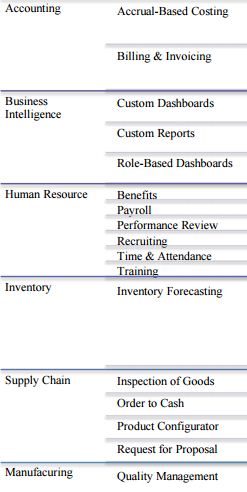
Limitation
The biggest limitation SAP user faces in the constant upgrades which takes a huge amount of money to implement. Each upgrade costs more than the previous one which makes it hard to be implemented in a company like Sanofi with each upgrade.
SAP provides the functionality for interfacing with a distribution center. According to the SAP website it is not yet possible to operate warehouses that are integrated with production on a decentralized basis, that is, without a link to some of the SAP system. Production supply and goods receipt from production are not supported for stand-alone warehouses in new release SAP.
SAP previous release does not allow users to link the warehouse to Quality Management systems (QMS) as a stand-alone component. The distribution center scenario described does not yet account for the integration of a Transportation Management system (TMS) in earlier release. Information on inbound and outbound deliveries is sent using the delivery. In the late release, SAP operated warehouses can communicate with a single ERP system only. SAP does not yet support service scenarios in which a warehouse services multiple companies. It is not possible to process serial number information for goods receipt and goods issue postings.
Manufacturer part number processing is not supported. You cannot cancel a goods receipt or a goods issue that has already been posted. For stock transfers, you can only use movement types for the two-step procedure.
SAP at Sanofi
Sanofi converted to the German software tool online for their data processing. First they started the conversion of SAP to Sanofi in France, United States in 2002. Later they initiated SAP to be activated in European region. However Bangladesh started using SAP as a management tool in 2004. SAP is used for different features of an organization. In many companies SAP used as
Account Tool, Business Intelligence Tool, Inventory Management Tool, Supply Chain Management Tool, Manufacturing Tool, Customer Relationship Management Tool and Human Resources Tool.
Human Resource Tool of SAP gives complete control over administrative employee functions such as recruiting, benefits, etc. Using integrated data and a centralized repository for employee data streamlines the HR process. SAP has a wide array of human resources features making it an excellent choice. Sanofi uses SAP as a management tool in the Human Resource department.
SAP is used to have all employee information at one place to be globally accessible by any of the Sanofi company access. Any of the Sanofi branch worldwide can access the SAP site to get information about certain employee. Each employee is given a unique identification number. For example, suppose a Sanofi employee of Bangladesh is given an ID say S0001, when this employee‟s information in updated SAP generates a new ID for global use which comes out something like SBD0001. In each country they follow the same system.
SAP also provides Sanofi with an E-Performance system. Here each employee provides a performance goal at the beginning of the year, later at the end of the business cycle the performance goal is checked and based on the goals achieved the employee is awarded an increment to their salary.
Sanofi faces a lot of down time from SAP. They take a long time to update the information. The updates cannot be seen as the information is being updated, user have to wait a 48 hour time period for it to work. This takes a lot of time for the information to be live.
Human Resource module of Sanofi contains all the layouts and transactions to effectively complete the recruiting to retiring process and maintains well arranged data of salary and benefits.
The SAP implementation cost was quite expensive and strong commitments to the changes being made. Therefore, Sanofi had specified the goals of implementing SAP and even though it would have been encouraged to employees to adapt to the change it was never fully implemented at Sanofi. These are very important steps for the SAP implementation to be successful.
Workday
Workday, Inc. is an ondemand cloud-based software vendor specializing on financial management and human capital management tools. The company was founded by David Duffield and AneelBhusri in 2005. Workday, Inc. targets the customers of rivals like Oracle or SAP. In December 2008, Workday moved its headquarters from Walnut Creek to Pleasanton, where PeopleSoft, founder Duffield’s prior company, was located. Workday sells software and services using the SaaS (Software as a Service) model. In October 2012, it launched a successful initial public offering that valued the company at $9.5 billion.
Supplier:
Sanofi purchased their license from Workday to be used as management tool as trail basis in some of the countries. Workday supplies the tools initial necessities for Sanofi. With Sanofi‟s IS team and workday a server is set in Singapore.
Features:
Workday is fairly new in the software vendor industry and they are targeting the Fortune 500 companies as customers. As of 2015 they have over 23 updates also being updates in every 6 months.
Workday‟s Human Capital Management tool offers a full suite of functionality for a Human Resources Information System, almost all of which will be implemented by the Workday project at Sanofi worldwide. However, this functionality will be released in phases.
In Phase I (beginning March 31, 2015), the following modules of Workday‟s suite will be implemented. These will replace Sanofi‟s current employee details administrative systems from SAP, which includes the Employee Database (Personnel data).
– Employee Information
In future phases, the following modules of Workday will be implemented at Sanofi
- Human Resource Management (includes Core HR and Compensation)
- Benefits Administration
- Payroll Administration
- Employee Self-Service
- Open Enrollment
- Recruiting (replacing People Admin, UChicago Jobs)
- Time Tracking
- Talent Management
Competitive Advantage over SAP
The founders of Workday Duffield and Bhusri have had extensive experience working for ERP firms like PeopleSoft. They know the consumer‟s dilemma and which is why they provide a more user friendly interface to customer. This is one of the reasons for Sanofi to take the decision to switch from SAP to Workday, Inc. Purchasing SAP license a decade ago Sanofi did not go through the upgrades over the years which is why still using a version created in the early 2000 has a few kinks that does not bode well with the current version. Using SAP as a management tool now takes way longer than necessary and with the upgraded software Sanofi is planning to use staying with SAP or upgrading their SAP would have taken a huge amount of money and training. Hence the deicing to changing their management tool from SAP to Workday, Inc. Workday is mobile friendly than other ERP software which is another reason for Sanofi to choosing this in particular to pass SAP off the table and start the new era with this certain module.
Employees will be able to update their own personal profile showcasing their skills, knowledge and career aspirations. Their managers will have greater visibility of their career preferences, which will support effective development conversations. Employees will be able to „make the connection‟ with the rest of Sanofi by searching for people across the Group. In the same centralized location you will also be able to set and edit your performance priorities (from midyear 2015).
Workday is a user-friendly application which also has functionality available on Apple mobile devices and some features available on Android, Windows and Blackberry devices. Since Workday is intended for use by all employees globally, a pre-configured Workday App is available in the Sanofi App Store (for Apple devices). Users may also download the Workday App to a personal or corporate mobile device through a public app store (for Apple or Android devices) or access Workday via Touch Optimized Mobile Web on their Windows or Blackberry devices. The App is available in English, French, Chinese (Simplified), German, Japanese, Portuguese and Spanish.
Project Details
Starting
Sanofi implemented Workday, Inc. software in some countries during 2014. By 2015 they plan to implement the software in all hundred countries of Sanofi. In Bangladesh the initial plan to start using Workday was much later but due to SAP‟s incompetency Sanofi Bangladesh decided to launch Workday sooner than it was originally anticipated. Workday was introduced to Sanofi Bangladesh in March 2015 (HR were give a preview period). Functionality includes Talent, Performance (from mid-year review 2015) and Organizational Management. Further functionality (core HR, compensation, absence, reporting) will be rolled out in waves, based on business case. Amongst other functionality, this will allow users to update their personal information and request time off. Sanofi is starting with North America (United States, Canada and Puerto Rico) and GSA (Germany, Switzerland and Austria) later in 2015. The composition of future waves is still to be determined.
Milestone to Be Achieved
Sanofi Bangladesh‟s milestone is to get everything on the Workday by 2017 from SAP. At this time Sanofi Bangladesh is working on getting all the employee information updated in Workday. Each employee has their own profile page which contains their position at the company. At this moment most employees don‟t have access to their own workday profile. The profile is being updated by the HR team and by the end of May all Sanofi employees will have their own profile access. Profiles will contain employee placement in the hierarchy of the company, professional details, achievement and other details. Profiles of employee can be access by any other Sanofi employee anywhere in the world. Sanofi plans to implement in-house placement through Workday, Inc. Rather than finding resource for higher up in the company outside, Sanofi plans to find it in-house anywhere in the world.
Launch Date
Sanofi was launched on 31st March 2015. Since then a HR team of two is working relentlessly to get it updates.
Challenges
Working with Workday, Inc. like SAP Sanofi might face downtime with their server but they believe it will be no longer an issue as they are using new server and the head office is directly working with Workday, Inc. As off this moment the main challenge they are facing is the HR team working to update the site is small. Updating such huge amount of information of each employee by two members of the HR team is taking a toll and they might fail to meet the deadline to handing each employee their profile by the end of May. Without more help they will not be able to update the entire site and have it up and running instead of SAP by 2017 milestone. Training for all the employees might be another challenge they have to face later. Facing the timestamp of different region it‟s hard to find a mutual time get a training face time. Photos larger than 1MB cannot be uploaded.
Training
Only one member of the HR team from Sanofi Bangladesh was trained by a Workday, Inc. specialist of Sanofi France via video conference. The member from the HR team is now using his training to update the site while training the other member of the team. They are constantly in contact with Workday supplier. Employees working to develop the site are given the FAQ provided from Sanofi France to answer employee‟s questions. Once the site is up and running employees can update their profile in Workday whenever or as often as they want. To get the most out of the system and to realize the benefits, it is recommended that employees regularly review their profile and make sure it is up to date.
Technical
Workday is a proven technology and has been launched successfully in over 700 companies globally, including J&J, GSK, Nissan, Lenovo, Ariva, Lafarge, HP, Philips, Google and eBay. A comprehensive testing plan was undertaken to help make sure that our version of the system is ready for Go Live. This included system testing by the Program team, which aimed to validate all Business Processes in the system. Then, end to end testing was carried out to validate the interfaces and local processes that support and use the data flows. The final testing phase was
User Acceptance Testing, when a select number of managers, employees and HR got to see the system and try the functionality. Workday is trying to open in Internet Explorer, but it is not compatible with this browser. To fix this, instructions are provided to employees in the Browser Compatibility job aid section.
Data Conversion
The data is converted manually. The HR team responsible for uploading the information into Workday is getting the information downloaded from SAP and manually updating them to Workday. Workday Change Network is a group of employees spread across geographies, divisions and functions. They are supporting Sanofi throughout this transition to Workday. The Workday Advocates are working closely with the Workday Program team and with their Extended Network, who are supporting them locally on site. Employees will have the option to import information from their LinkedIn profile. Employee‟s historical data will be available for Talent and Performance, the following information is available: Performance rating from 2011- 2014 (only the ratings themselves), Development Needs and Development Action from 2014. 2015 will be the first year that Priorities and Lead Competencies will be visible in Workday performance templates after they are migrated from ePerformance in April.
Recommendation
The SAP software implementation at Sanofi was a significant step for them for going paperless in the late 90‟s. However to get the proper benefits from SAP they hadn‟t upgraded the SAP system as they should have which is why they have taken on Workday as their management tool. The reason to do so is that it is important that the employees are well trained, change management was smooth, etc. So, based on the information I have received so far, some recommendations have been made. I hope that if these recommendations are implemented, they will enable Sanofi Bangladesh Ltd SAP to Workday transformation more smooth and make management work much easier.
- Workday is a new software system, while anyone with some internet know how should be able to access the site and work with it, Sanofi Bangladesh should train their employees so they can update their profile. These way employees can be trained, so they could get familiar with the system. During SAP implementation, only a few employees worked on the system and that wasn‟t changed in Workday, which is why they are currently facing huge workload and have very little time to get up and running with the given date. Therefore, employees should be given proper training and only then, they will be able to understand the system and work with it better.
- Workday also going through many releases, developing tools not just management tool but also financial tools and in future inventory tools etc. With phases Sanofi is implementing Workday only in the management site of the company; however implementing it to the financial tool will be fruitful to run things more smoothly.
- Workday app for Sanofi is available in certain languages. Implementing Bangla language to be one of them would be much fruitful for the sales division of Sanofi Bangladesh Ltd.
- Two tier of profile update should be implemented. Profile update by employees should be checked by manager and vice verse. For example, once employee is given access to his or her Workday account when they make changes to their profile, their line manager will receive a notification to check if the update is appropriate or not. Also if a manager applies any changes in employees account, the employee will receive a notification to check the changes.
- A proper guideline should be created by Sanofi and Workday for employees to get the help they need to help run the profile.
- Sanofi Workday should allow attachments as soon as practicable. A common repository for information is critical to work efficiency. The service group is willing to assist in development of an appropriate document list. Employees at Sanofi sits in for various exams and receives a number of certificate for their work, those should have the option to be uploaded on the site.
- Using workday to keep the inventory up to date, which could have been also implemented in SAP. Keeping the inventory up to date would help the Medical Service Officer‟s information regarding the medicine they have in stock and how much the would need to give the doctors. So keeping the inventory updated online in their Workday inventory system would help the officers keep the amount they need.
- Should keep Workday release updated with Sanofiworkfeed. Previously Sanofi had let it go. They ignored to update SAP with their newest releases, with Workday Sanofi should definitely avoid such collision. As Workday is shaping up their interface to be more user friendly than anything, it‟s fprSanofi‟s own benefit to keep the tool updated with the new versions.
Conclusion
Mangement tool implementation is a significant and time consuming work for any organization. Though the implementation costs of such management tool is huge, ones it is properly placed in the company the benefits outways the financial take in the long run. Sanofi has implemented SAP to in the company for more than a decade, which has given them the opportunity to keep their management in supurb shape than their competitors. Outdated, fragile technology doesn‟t meet the company’s needs and is not sustainable any longer. Complex, out of date processes and reduce administrative effectiveness and efficiency. Workday system will bring cure to that. It will be the starting point for future expansions for Sanofi. A modern, flexible platform such as Workday for future growth reduced administrative burden on the company HR team, lowers total cost to keep this information updated. With the new system, initially employees will face some problems but soon will be able to adapt to the changes and as a result, the employees will become more efficient. Workday requires less hardware and maintenance support; assumes many of the support, training, infrastructure and security risks. Rapid development and deployment of new functionality due to modern technology of Workday will certainly make Sanofi‟s management a better system. It ten years time if Sanofi keeps the management tool Workday as they need to, updated and teach the use of this software to their employees, the efficiancy ad effectiveness that takes place will be worth the migration from SAP to Workday.
